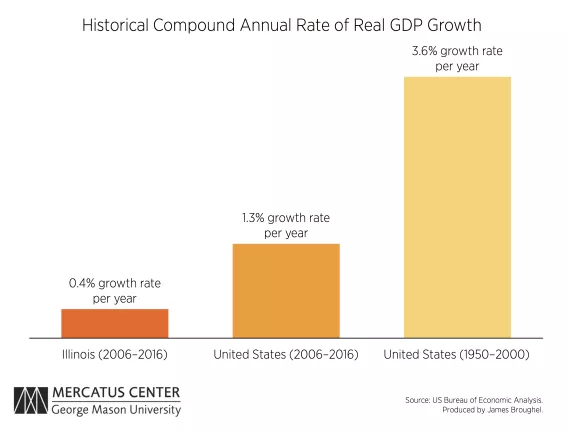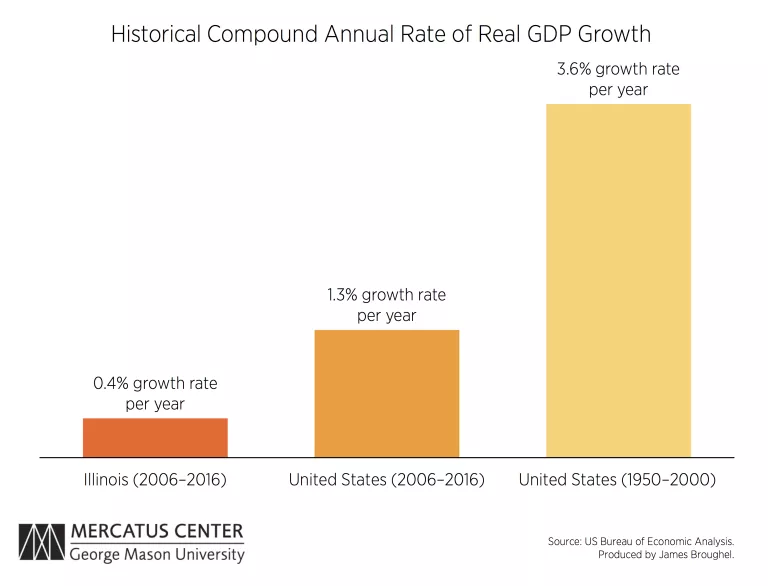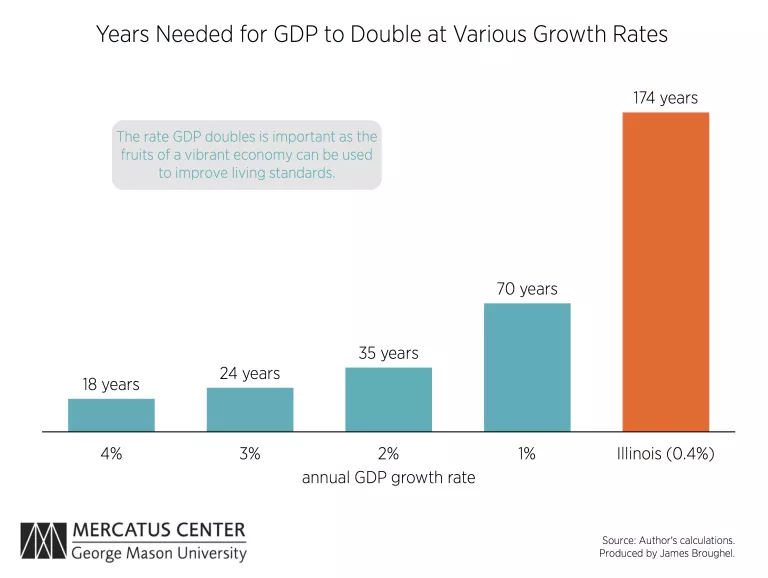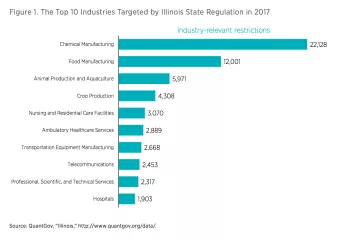- | Housing Housing
- | Data Visualizations Data Visualizations
- |
Small Differences in Growth Rates Matter for Illinois's Future

Illinois’s economic growth averaged a meager 0.4 percent per year from 2006 to 2016, lagging behind the lackluster national rate of 1.3 percent for the same period. One reason for the state’s recent slow growth is the Great Recession of 2007–2009. Distressingly, however, the US economy, which includes Illinois, has not recovered as quickly from the recent recession as it has from previous recessions.
US inflation-adjusted GDP grew at a more robust 3.6 percent annually from 1950 to 2000, a period in which there were eight recessions, suggesting that much faster growth rates are possible, both in Illinois and at the national level. A difference of two or three percentage points in growth may not sound like much, but small increases in growth rates can mean enormous improvements in living standards over long periods.

For example, if Illinois’s economy were growing at 4 percent per year, it would take just 18 years to double in size. This means that a child born in Illinois today would begin college in an economy twice the size of the economy today. An economy growing at 3 percent, however, takes 24 years to double—six years longer. By that time, a child born today might have graduated college and could even be married. When the economy grows at 2 percent, the doubling time is 35 years—nearly half a lifetime. Growing at 1 percent means it takes 70 years to double GDP, just 9 years shy of the life expectancy of an American born in the year 2014.
If Illinois continues to grow at 0.4 percent annually, it will take 174 years for its economy to double—that’s more than two lifetimes. This means children born today in the Prairie State will never see a doubling of real GDP in their lives. Nor will their children.

GDP does not measure all aspects of well-being, but the income generated by a vibrant and growing economy can improve living standards in countless ways. With a more robust economy, Illinoisans would have opportunities to increase investments in health and education and pass along wealth to their children.
Small differences in growth rates matter. Every state in the country should be concerned about growth, especially Illinois, with growth rates far below the national rate.


